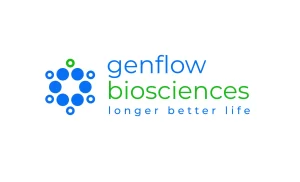We hear a lot of different terms thrown around about our health and livelihood. It can be difficult to determine what is what. Many articles and health “experts” often talk synonymously about our health span and life span, but there is one significant difference.
Having a long life span is indeed the same as having a long life. In other words, the life span is simply how long you live. The definition of healthspan, however, is how many healthy years you live. So, you may have a long life span and live until you are 100 years old, but if you spend 50 of those years being greatly affected by a chronic illness, your health span would only total 50 years.
Certain diagnosable diseases have different biomarkers that scientists have been observing for years. A biomarker is an age range in which the risk for acquiring a specific illness is noticeably increased.
For example, heart disease typically occurs at around 65 years of age, while chronic obstructive pulmonary disease (COPD) is usually first detected around age 45.
Unfortunately, other disease processes like cancer and anemia do not have predictable biomarkers, making calculating and estimating the human healthspan a little more challenging. Put simply, living a long life does not mean you are living a healthy lifestyle. The good news is that increasing your health span may contribute to an increased life span. So how can we accomplish growing our healthspan?
Understand Aging
Biotech researchers at Genflow Biosciences have attributed the process of aging to a declining activity with time of a gene that repairs DNA damage, SIRT6 gene. This biotech company has found that providing additional copies of a centenarian mutant of this gene with better ability to repair DNA damage may lead to slower aging. Many factors in biology contribute to aging, such as slowing of mitochondrial function, the powerhouses that fuel our cells.
While understanding the cause of aging does not prevent its occurrence, it can lead to developments of treatment methods aiding in the prevention of signs of aging and increasing our average lifespan.
Gene Therapy
Genflow is working on experimental research in genetics regarding integrating additional copies of this SIRT6 gene into an intravenous infusion that does not integrate itself into the chromosome, as that could cause mutation to occur over time.
This eliminates health risks, leading to an overall safer therapeutic option to longer, healthier lives. While this science is still being researched and ethically tested on animals, we can explore alternative healthspan extension methods in the meantime.
Nutrition
What we eat gets broken down in our bodies, and the components can affect all of our different organs and systems. Maintaining adequate nutrition can ensure that our organs stay happy and in good health and may help prevent chronic conditions and neurodegeneration.
Whenever our bodies’ components are in shape, the body as a whole runs like a well-oiled machine. So going to its simplest components makes sense when searching for answers to keep living our healthiest lives.
Reduce Redness and Swelling
Consistent redness and swelling can be an underlying contributor to several disease processes like diabetes and hypertension. Inflammatory foods include fried foods, processed or red meats, and carbonated beverages.
The irritation these foods cause to the lining of the digestive tract causes the production of mucus. Foods that aid in fighting mucus causing swelling can promote healthy aging, including fruits, raw leafy vegetables, fatty fish, nuts, and olive oil.
Increase Iron
Research shows that fatigue, anemia, and kidney disease are linked to decreased iron levels in the aging population. As we reach old age, our bodies do not absorb iron as easily.
The increase in susceptibility to iron deficiency diseases can lead to a short lifespan. Iron-rich food includes eggs, liver, dark green vegetables, and various seafood.
Stay Hydrated
Maintaining adequate water consumption can help keep you hydrated at the cellular level. Cells containing plenty of water allow proper dilution of electrolytes like sodium and potassium that float around in our bodies, helping our heart and skeletal muscles function properly.
Usually, the moment you feel thirsty, you are already dehydrated on the cellular level. These signs include dry mucous membranes like the mouth and eyes, headache, and muscle cramps.
Exercise
Maintaining an exercise routine is a behavior change that can increase your health span and cognitive health and make you feel younger in the process. Proactively exercising and incorporating more physical activities is key to living a life free of poor health, and different people may need different levels of activity.
Waiting until a diagnosis can make beginning an exercise regime incredibly difficult. Imagine waiting to use a bike until it is already rusted. It is much harder to get it going, making it less enjoyable and yielding less desirable results.
Start Low and Slow
Prevent burnout by being reasonable. Walking for 20 minutes is considered adequate exercise for weight maintenance, lipid metabolism, and other key biological mechanisms. Setting attainable goals can ensure that you will stick to them.
If taking on weight-bearing exercises, do not attempt to overload your muscles by lifting too heavy. Doing more sets with lower weights can have desirable results for glycemic control while maintaining safety.
Stick To a Plan
Fitting exercise into your weekly routine takes commitment and intention. Planning ahead can help ensure that you commit to a routine. Alternatively, having an exercise partner can help keep you accountable and make the exercise itself more enjoyable. Staying active three to five days per week is a recommendation that has shown to have adequate positive effects on population health that can prevent harmful acute and chronic disease.
Moderation is Key
While eliminating alcohol intake entirely may not be necessary, recent work shows that reducing your drinking to one or two alcoholic beverages per day can increase your overall health. Your sleep cycle can improve, your liver functions at full capacity, and your cells maintain hydration by regulating antidiuretic hormone secretion.
Furthermore, preclinical studies indicate that the body can handle the consumption of clear alcohol such as vodka or tequila better than that of beer, which is made from wheat and barley. This contributes greatly to daily carb, glucose, and calorie intake, providing little to no nutritional value. Red wines have been preferred over the years due to their antioxidants and supposed positive impact on heart health.
Adequate Rest
Lastly, getting the right amount of shut-eye can keep you healthy, potentially expanding your years of physical and mental health while slowing the aging process. Sleep is when we regenerate.
Our bodies process our day and environmental factors, restore our muscle, tissue, and nerve cells, cognitive function, and even fight infection. This reduces the risk of acute and even chronic degenerative diseases.
On the other hand, too much sleep can negatively impact overall health and should be limited to the recommended six to eight hours for adults.
Conclusion
After exploring the difference between health span and life span, the idea of living not only longer but actually healthier years becomes plausible. Having control over your body’s longevity is empowering, especially when the factors that affect it are so easily attainable.
In the words of the founder and CEO of Genflow Biosciences, Eric Leire, “The idea is to keep people healthy for as long as possible, not to live as long as possible.”
Sources:



